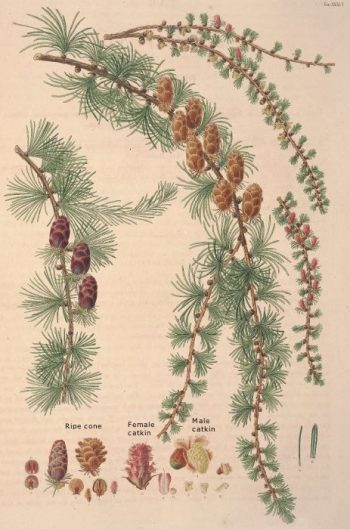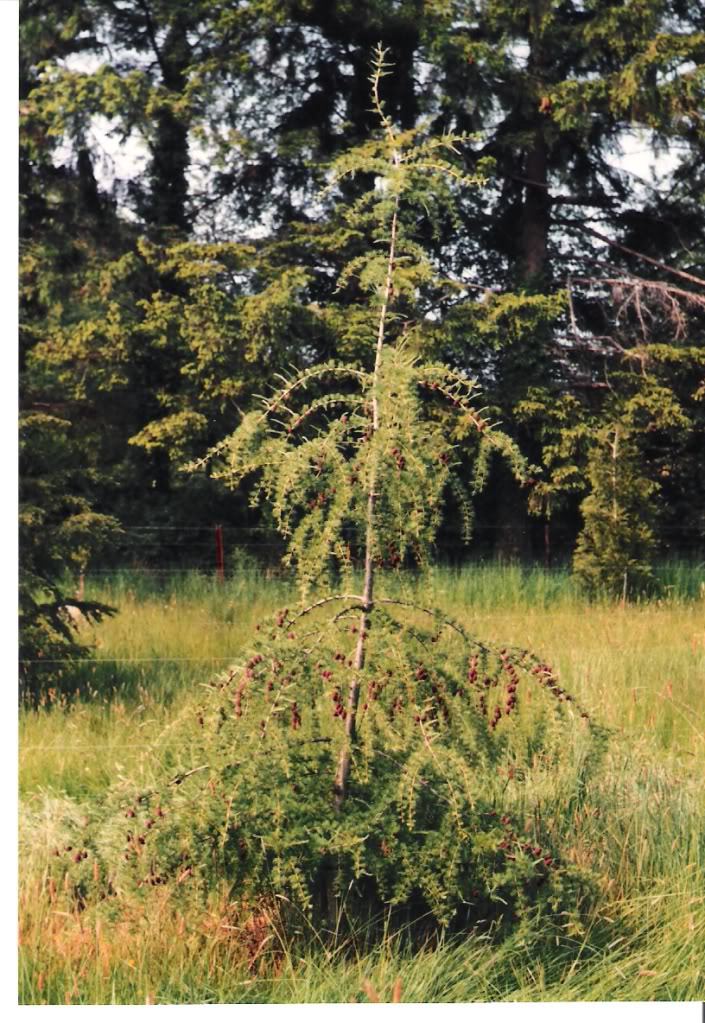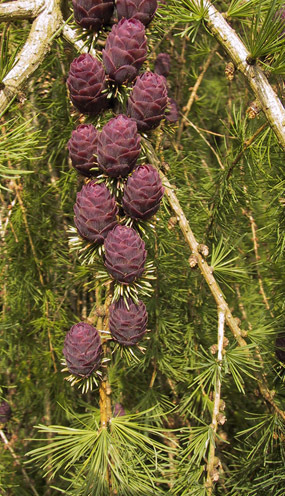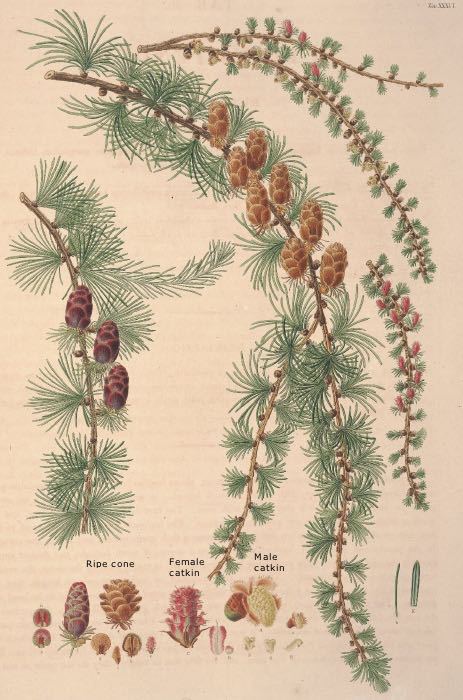Larix × pendula, first described in 1807 by Solander (Richard Anthony Salisbury (1761-1829) is commonly known as Weeping larch. It is a hybrid of the two larch species European larch (L. decidua) and Tamarack (L. laricina).
It is a naturally occurring hybrid first found in England in the 1730s shortly after Tamarack was introduced into the country. At the same time, the same hybrid began appearing the USA, near Lake Ontario, following the introduction of European larch.
Description. Weeping larch is a deciduous coniferous tree which grows to heights of 100 feet (25 m) tall with a trunk up to (60 cm) in diameter, measured at breast height. It structurally resembles L. laricina, but has strongly pendulous lateral branches.
- Branchlets resemble L. dedidua, but differs with orange-brown pendant branchlets.
- Leaves also resemble those of L. laricina, but are more obtuse, about 0.04 inch (1 mm) across with a blunter tip.
- Seed cones are the most distinctive feature, intermediate in length between the two parent species at 0.8 to 1.2 inches (2 - 3 cm) long, versus 0.4 to 0.8 inch (1 - 2 cm) in L. laricina and 1.6 to 2 inches (4 - 5 cm) long in L. decidua. It also has 20 to 30 seed scales versus 10 to 20 in L. laricina and 40 to 50 in L. decidua. The seed cones are shaped more like L. laricina in that the lower seed scales are noticeably larger than those in the middle of the cone. However, like L. decidua, the lower bracts may be slightly visible.
This tree lacks the vigor of
L. × marschlinsii, giving it limited value in the timber industry. However several interesting cultivars have been introduced to the nursery trade.



